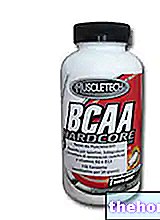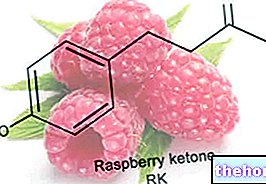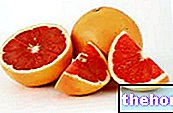What is the Agnocasto?
The chaste tree is given by the ripe, dried fruit of a shrubby plant belonging to the Verbenaceae family.
Beyond the traditional Latin name (Vitex agnus castus L.), the chaste tree recognizes several vulgar names, such as pepper tree, false pepper or monks pepper; abroad, then, the drug is also known as Chasteberry, Chaste tree and Monk "s pepper.
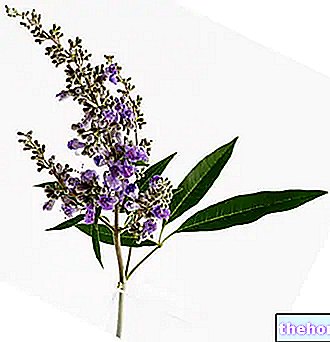
Among all, in our opinion the most interesting term - because it says a lot about its past phytotherapeutic use - is that of "Tree of Chastity". The ancient Greeks, in fact, already knew its inhibiting properties on the libido, so much so as to make it the life partner of priestesses taking a vow of chastity; the tradition was later picked up during the Middle Ages, when monks used to use fresh berry tincture to suppress sexual impulses; the use of the chaste tree in this sense has then clearly fallen into disuse.
Active principles
The drug, as anticipated, consists of ripe and dried fruits. The fruits are reddish-black berries containing four seeds, whose taste - slightly pungent and similar to pepper - has led to the well-known dialectal denominations.
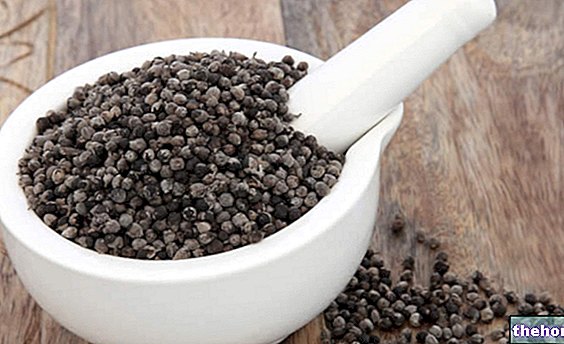
Inside the drug we find iridoid glycosides, flavonoids, terpenes, alkaloids and a minimal percentage of essential oils. Among the iridoids we point out agnuside, which represents the reference substance for evaluating the quality of the drug.
Property
The chaste tree has become, for some years now, one of the undisputed protagonists of women's magazines; its use, in fact, helps to harmonize the hormonal balance of women, regulating the ovulatory system in the presence of amenorrhea and dysmenorrhea, and improving neurovegetative disorders (hot flashes) in menopause.
The phytotherapeutic action of the chaste tree takes place at the level of the pituitary gland, where it slows down the release of prolactin from the anterior lobe thanks to its dopaminergic effect (dopamine is a neuromediator that inhibits the secretion of prolactin). also act positively on the rebalancing of the estrogen / progesterone ratio in favor of the latter (the decrease in this ratio in favor of estrogen, common in premenopause, can cause swelling of the breasts or abdomen, cycle disorders, infertility and weight gain ). The exact mechanism of action of the chaste tree, however, has not yet been completely clarified and, more than to a single active substance, it is attributable to the phytocomplex.
Indications
The German Commission E recommends the use of chaste tree in cases of menstrual cycle abnormalities, premenstrual syndrome and to relieve mastodynia.
Traditional indications: vasomotor disorders associated with climacteric (hot flashes), hyperprolactinemia, menstrual cycle irregularities (amenorrhea, dysmenorrhea, hypermenorrhea, polymenorrhea), premenstrual syndrome (with its psychic and somatic symptoms), mastalgia / mastodynia (neuralgic pain breasts, often present in the days that act as a curtain against the flow) and infertility. Chaste tree extracts can be used to normalize ovulation and menstruation after interruptions caused by the contraceptive pill.
The efficacy of chaste tree has been confirmed by several randomized clinical trials, particularly in the area of the treatment of cycle disorders, especially mastodynia, and premenstrual syndrome. The particularly encouraging results have certainly contributed to supporting it. the widespread commercial success. However, we must not forget that, although many products containing it can be freely purchased without a prescription, the chaste tree should always and in any case be taken on the basis of medical-gynecological advice.
Side effects
The chaste tree, due to its hormone-stimulating action, must not be taken during pregnancy and breastfeeding; for the same reason it could interfere with oral contraceptives or hormone replacement therapy, even if it is only a theoretical assumption and still to be fully evaluated. A further possible interaction is that with antagonists (drugs used to control psychosis) and dopamine agonists (drugs used to control depression and in the treatment of Parkinson's disease).
Although chaste tree can stimulate the onset of allergic reactions in susceptible individuals, it is a safe and well tolerated drug. During use, the sporadic onset of nausea, gastrointestinal disturbances, menstrual disorders, itching, urticaria and rashes have been reported; these effects, however, are mild and reversible after discontinuation of treatment.
Other articles on "Agnocasto"
- Agnocasto - Property of Agnocasto - Phytotherapy
- Agnocasto in Herbalist: property of Agnocasto

